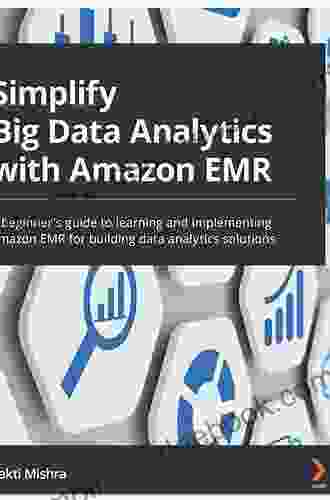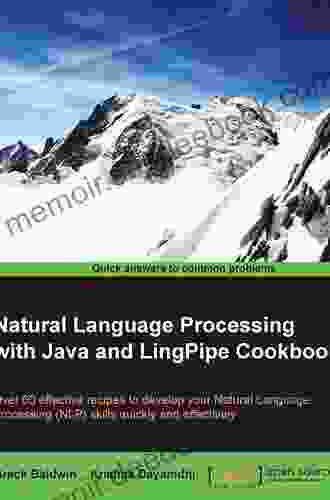Lean Agile and Six Sigma Information Technology Management

5 out of 5
| Language | : | English |
| File size | : | 7674 KB |
| Text-to-Speech | : | Enabled |
| Enhanced typesetting | : | Enabled |
| Word Wise | : | Enabled |
| Print length | : | 340 pages |
| Lending | : | Enabled |
| Screen Reader | : | Supported |
| X-Ray for textbooks | : | Enabled |
In today's rapidly changing business environment, Information Technology (IT) organizations are under increasing pressure to deliver value quickly and efficiently while maintaining high levels of quality and customer satisfaction. To meet these challenges, many IT organizations are adopting Lean Agile and Six Sigma methodologies to improve their processes and achieve operational excellence.
Lean Agile and Six Sigma are two complementary methodologies that can be used to create a high-performing IT organization. Lean Agile focuses on eliminating waste and improving flow throughout the IT value stream, while Six Sigma focuses on reducing variation and improving quality. By combining the strengths of these two methodologies, IT organizations can create a culture of continuous improvement that leads to increased efficiency, effectiveness, and customer satisfaction.
What is Lean Agile?
Lean Agile is a set of principles and practices that can be used to improve the efficiency and effectiveness of any process. Lean Agile is based on the idea of eliminating waste and improving flow. Lean Agile principles include:
* Customer focus: The customer is the most important person in any process. Lean Agile practices focus on understanding the customer's needs and delivering value to the customer. * Value stream mapping: Value stream mapping is a technique that can be used to identify and eliminate waste in a process. Value stream mapping involves creating a visual representation of the process and then identifying the steps that add value to the customer. * Kanban: Kanban is a visual management system that can be used to improve flow in a process. Kanban boards are used to track the progress of work and to identify bottlenecks. * Scrum: Scrum is an Agile framework that can be used to manage complex projects. Scrum teams work in short sprints, and they use daily stand-up meetings to track their progress and identify any roadblocks.
What is Six Sigma?
Six Sigma is a set of principles and practices that can be used to improve the quality of any process. Six Sigma is based on the idea of reducing variation and improving consistency. Six Sigma principles include:
* Define: The first step in any Six Sigma project is to define the problem that needs to be solved. The problem should be clearly defined and measurable. * Measure: The next step is to measure the current performance of the process. This data will be used to establish a baseline and to track progress over time. * Analyze: The next step is to analyze the data and identify the root causes of the problem. This step is often the most challenging part of a Six Sigma project. * Improve: Once the root causes of the problem have been identified, the next step is to implement improvements to the process. These improvements should be designed to reduce variation and improve quality. * Control: The final step in a Six Sigma project is to control the process and ensure that the improvements are sustained over time. This step involves monitoring the process and making adjustments as needed.
Benefits of Lean Agile and Six Sigma Information Technology Management
There are many benefits to implementing Lean Agile and Six Sigma in IT organizations, including:
* Increased efficiency and effectiveness: Lean Agile and Six Sigma can help IT organizations to improve their efficiency and effectiveness by eliminating waste and improving flow. This can lead to reduced costs, improved customer satisfaction, and increased profitability. * Reduced variation and improved quality: Lean Agile and Six Sigma can help IT organizations to reduce variation and improve quality by identifying and eliminating the root causes of problems. This can lead to increased customer satisfaction, reduced costs, and improved compliance. * Increased customer satisfaction: Lean Agile and Six Sigma can help IT organizations to increase customer satisfaction by delivering value quickly and efficiently while maintaining high levels of quality. This can lead to increased customer retention and loyalty. * Improved employee morale: Lean Agile and Six Sigma can help to improve employee morale by creating a culture of continuous improvement. This can lead to increased employee engagement and productivity.
How to Implement Lean Agile and Six Sigma in IT Organizations
Implementing Lean Agile and Six Sigma in IT organizations can be a challenging but rewarding process. The following steps can help you to get started:
* Assess your current state: The first step is to assess your current state and identify areas for improvement. This step can be done by conducting a process review or by using a self-assessment tool. * Define your goals: Once you have identified areas for improvement, the next step is to define your goals for improvement. Your goals should be specific, measurable, achievable, relevant, and time-bound. * Create a plan: Once you have defined your goals, the next step is to create a plan for improvement. This plan should include a timeline for implementation, a budget, and a team of responsible individuals. * Implement your plan: The next step is to implement your plan. This step should be done in a phased approach, and it should involve training, coaching, and mentoring. *
5 out of 5
| Language | : | English |
| File size | : | 7674 KB |
| Text-to-Speech | : | Enabled |
| Enhanced typesetting | : | Enabled |
| Word Wise | : | Enabled |
| Print length | : | 340 pages |
| Lending | : | Enabled |
| Screen Reader | : | Supported |
| X-Ray for textbooks | : | Enabled |
Do you want to contribute by writing guest posts on this blog?
Please contact us and send us a resume of previous articles that you have written.
 Book
Book Novel
Novel Chapter
Chapter Text
Text Genre
Genre Library
Library E-book
E-book Newspaper
Newspaper Paragraph
Paragraph Bookmark
Bookmark Shelf
Shelf Preface
Preface Annotation
Annotation Codex
Codex Tome
Tome Bestseller
Bestseller Library card
Library card Autobiography
Autobiography Reference
Reference Thesaurus
Thesaurus Narrator
Narrator Resolution
Resolution Card Catalog
Card Catalog Stacks
Stacks Archives
Archives Study
Study Scholarly
Scholarly Lending
Lending Reserve
Reserve Academic
Academic Journals
Journals Rare Books
Rare Books Special Collections
Special Collections Literacy
Literacy Study Group
Study Group Dissertation
Dissertation Storytelling
Storytelling Reading List
Reading List Book Club
Book Club Textbooks
Textbooks Joss Stirling
Joss Stirling Algernon Blackwood
Algernon Blackwood Lea Geller
Lea Geller Richard Hofstadter
Richard Hofstadter Ruth Perry
Ruth Perry Jonathan Philippe
Jonathan Philippe Seigaku Amato
Seigaku Amato Robert A Francis
Robert A Francis Kehinde Andrews
Kehinde Andrews J C Thomas
J C Thomas Krzysztof Miklaszewski
Krzysztof Miklaszewski Joseph P Ficalora
Joseph P Ficalora Giorgio Blundo
Giorgio Blundo Donald M Lewis
Donald M Lewis Sonya Jesus
Sonya Jesus Oliver Stuenkel
Oliver Stuenkel Alisa Kwitney
Alisa Kwitney William Enckhausen
William Enckhausen Juan Felipe Herrera
Juan Felipe Herrera Anna Albo
Anna Albo
Light bulbAdvertise smarter! Our strategic ad space ensures maximum exposure. Reserve your spot today!

 Gerald BellA Beginner's Comprehensive Guide to Learning and Implementing Amazon EMR for...
Gerald BellA Beginner's Comprehensive Guide to Learning and Implementing Amazon EMR for... Kenneth ParkerFollow ·8.7k
Kenneth ParkerFollow ·8.7k Cole PowellFollow ·16k
Cole PowellFollow ·16k Douglas AdamsFollow ·10.4k
Douglas AdamsFollow ·10.4k Evan SimmonsFollow ·4.3k
Evan SimmonsFollow ·4.3k Jessie CoxFollow ·16.7k
Jessie CoxFollow ·16.7k Michael ChabonFollow ·10k
Michael ChabonFollow ·10k Jerome PowellFollow ·9.5k
Jerome PowellFollow ·9.5k Julio Ramón RibeyroFollow ·7.7k
Julio Ramón RibeyroFollow ·7.7k

 Vernon Blair
Vernon BlairHow to Get a Woman to Pay for You: A Comprehensive Guide...
In the modern dating...

 Levi Powell
Levi PowellPrinciples and Theory for Data Mining and Machine...
Data mining and machine learning are two...

 Andrew Bell
Andrew BellMirrors For The Mind: Milestones In Discovery And...
Mirrors have been a part of human history...

 Alec Hayes
Alec HayesDelving into Natural Language Processing with Java and...
Natural Language Processing (NLP) is an...
5 out of 5
| Language | : | English |
| File size | : | 7674 KB |
| Text-to-Speech | : | Enabled |
| Enhanced typesetting | : | Enabled |
| Word Wise | : | Enabled |
| Print length | : | 340 pages |
| Lending | : | Enabled |
| Screen Reader | : | Supported |
| X-Ray for textbooks | : | Enabled |














